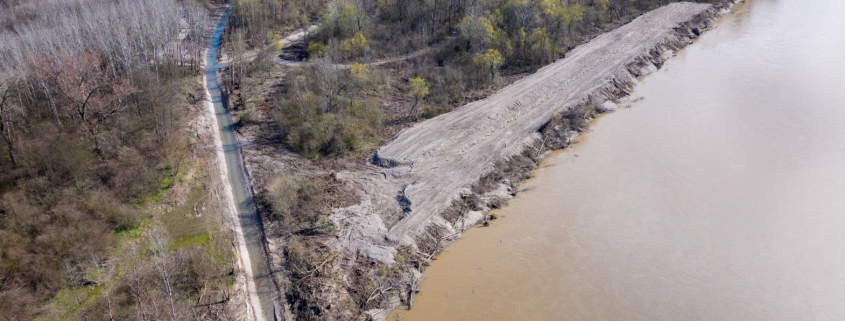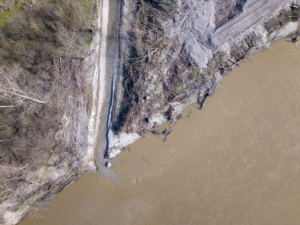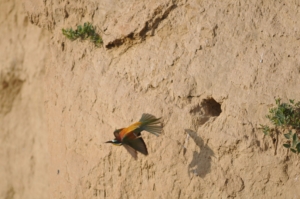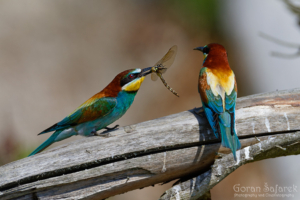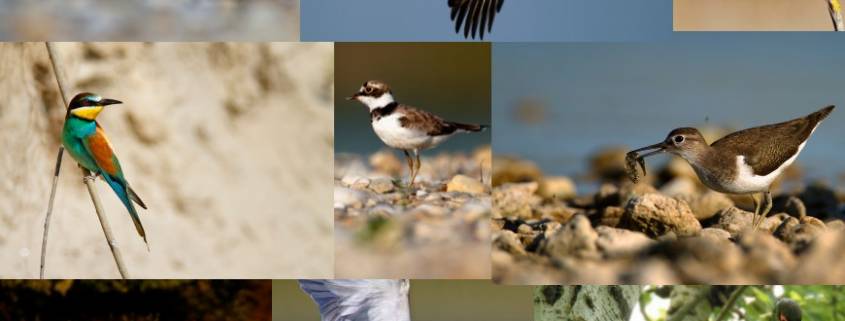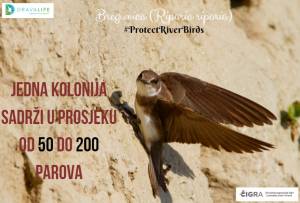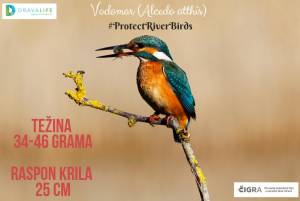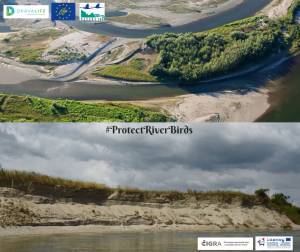Đelekovec has been declared the first sand martin village
/in Nekategorizirano /by Iva Naglić DolićĐelekovec, June 10, 2024 – The village of Đelekovec has been declared the first sand martin village in Croatia. Within the same municipality is a steep riverbank on the Drava River called Libanovec, which serves as a home and favorite nesting site for one of the largest colonies of these strictly protected bird species. This recognition highlights the importance of preserving natural habitats and the successful collaboration between the local community, farmers, and ecological experts.



Jasmin Sadiković, Zeleni Osijek

Jasna Puhar

Igor Tošić
The sand martin (Riparia riparia) is a small migratory bird that nests in colonies on steep, sandy riverbanks. Its presence is a significant indicator of the health of river ecosystems. About 70% of the Croatian sand martin population nests along the Croatian-Hungarian border, with the Libanovec bank being a crucial habitat for this species.
Sustainable Management and Nature Conservation
The steep riverbank at Libanovec was formed in the 1980s due to significant changes at the mouth of the Mura into the Drava. The municipality of Đelekovec sought to protect the agricultural land along the bank. Various options were considered, and a solution was reached that satisfied all parties involved – water management, nature conservation, the Municipality of Đelekovec, and farmers. The land was leased to the owner of the Puhar family farm. The municipality and Mrs. Puhar will sign an annex to the contract allowing erosion of the agricultural land, which will reduce the rental price. This initiative represents a successful example of cooperation between the local community, farmers, and ecological experts in preserving biodiversity and improving the quality of life.
“Instead of environmentally less acceptable bank reinforcements, so-called cross groins were constructed,” explained Igor Tošić from Hrvatske vode. “An integrated water management approach allowed us to protect this valuable natural habitat, thereby also protecting the area along the bank from erosion.”
“We are proud to declare Đelekovec as the first sand martin village in Croatia today,” said the mayor of the Municipality of Đelekovec, Lara Samošćanec. “I am glad that we will protect the sand martins so that our land remains their favorite summer destination and so that our residents and visitors can continue to enjoy them.”
“We farmers live from and with nature, so we care about preserving it for future generations. We are pleased that we reached a satisfactory agreement with the Municipality and the partners of the DRAVA LIFE project and that we continue to cultivate the land in harmony with these beautiful birds. We hope that this activity will enable their numbers to increase in the future,” said Jasna Puhar (Puhar Family Farm).
The sand martin, a small migratory bird from the swallow family, nests in colonies along sandy riverbanks. It serves as a crucial indicator of river ecosystem health. In your municipality, the steep banks of Libanovec are a vital habitat and breeding ground for one of Croatia’s largest sand martin colonies. Nearly 70% of Croatia’s sand martin population resides near the Croatian-Hungarian border. Globally, this species is declining, making the preservation of the Libanovec coast and its avian visitors critically important.
“We are proud to have protected the steep bank in Libanovec as part of the DRAVALIFE project. This colony has hosted over 1,000 breeding pairs of sand martins in some years”, said Tanja Nikowitz from WWF Austria.
“At the project’s outset, we explored various ways to protect the steep bank while also addressing the needs for farmland and water protection. Our collaborative solution integrates water management and nature conservation to safeguard the land behind the steep bank. The farmland, already publicly owned and managed by the municipality of Đelekovec, is leased to Mrs. Puhar, a dedicated farmer. Both parties were committed to preserving the sand martin colony for the future. Consequently, they will sign an agreement allowing for farmland erosion, with reduced rent for the farmer. This initiative by the municipality of Đelekovec and Mrs. Puhar is exemplary, not only in Croatia but beyond.”
“Several other endangered and valuable steep banks along the Drava River require similar protection. Natural contractual measures like those in Libanovec, or land purchases, are essential for conserving these habitats and their avian residents. Ensuring the security of the land behind these banks is crucial for effective water management and erosion control. Such integrated river management efforts necessitate joint forces”, concluded Nikowitz.
“This is an exceptional recognition for Đelekovec and the entire Koprivnica-Križevci County. The natural areas of the County, renowned for their beauty and exceptional value for the preservation of biodiversity, are protected as part of the Natura 2000 areas, the Mura-Drava Regional Park, and are part of UNESCO Five-Country Biosphere Reserve Mura-Drava-Danube”, said Željka Kolar, Director of the Public Institution for the Management of Protected Natural Areas in the Koprivnica-Križevci County.


